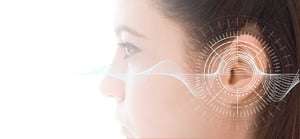The work of the US researchers stemmed from a series of other research work, carried out internationally in the past, on birds and other animals, like frogs and fish. These animals have the ability to regenerate lost sensory hair cells, whereas mammals, including humans, do not have this possibility. But how do birds “repair” their hearing naturally? It was discovered (in 2012) that a receptor (called EGFR), found in supporting cells, plays a very important role. This receptor is capable of attaching itself to molecules called epidermal growth factors, which push the supporting cells – in birds – to develop and become hair cells. Mammals also have these receptors, but their activation never leads to the formation of hair cells, for reasons yet to be explained.
The researchers from Rochester and Harvard thus decided the “force their hand” and to find a way to spark this transformation in the cells of laboratory animals (mammals). Therefore, they tried to stimulate a particular subtype of receptor called ERBB2, by genetically modifying the experimental animals so that they would express more of it than they usually would, or by making it become the target of specific viruses or, even, by administering two drugs that stimulated own ERBB2 production. In the end they managed to show that the activation of the cascade of events regulated by ERBB2 effectively leads to the proliferation of the supporting cells and their transformation into hair cells, as well as the integration of these cells with the neurons that are responsible for sending the electrical impulses to the brain – another fundamental step for hearing.
We are, of course, a long way off having a therapy, but this discovery could be important, because it seems to suggest a completely new path to follow in the search for a cure for loss of hearing.

